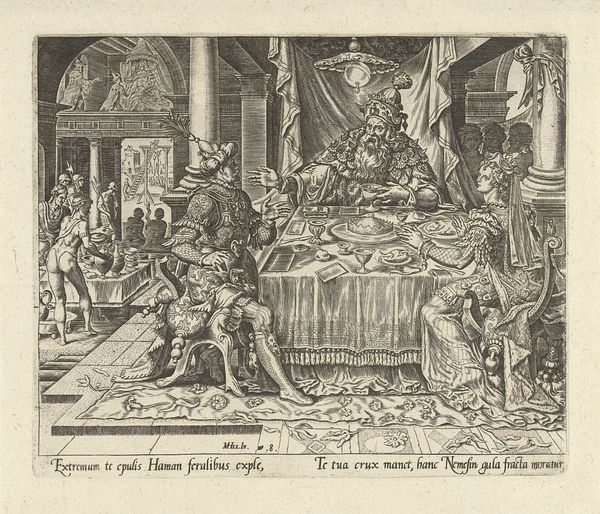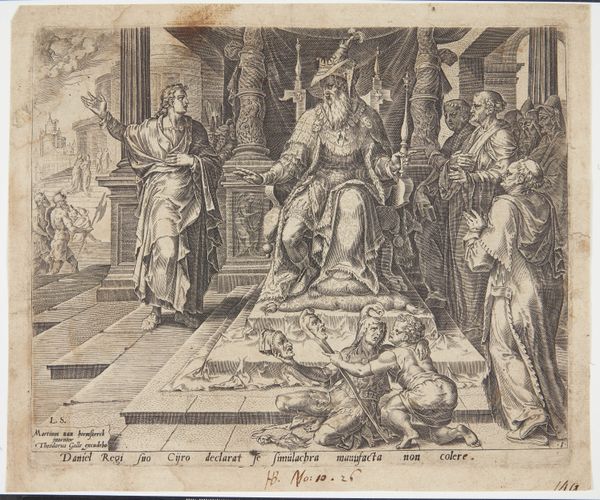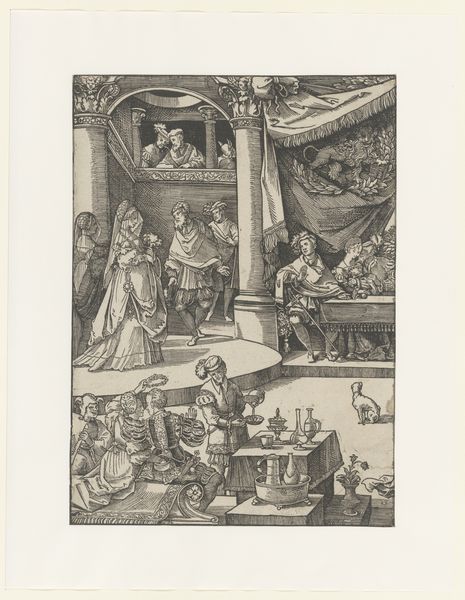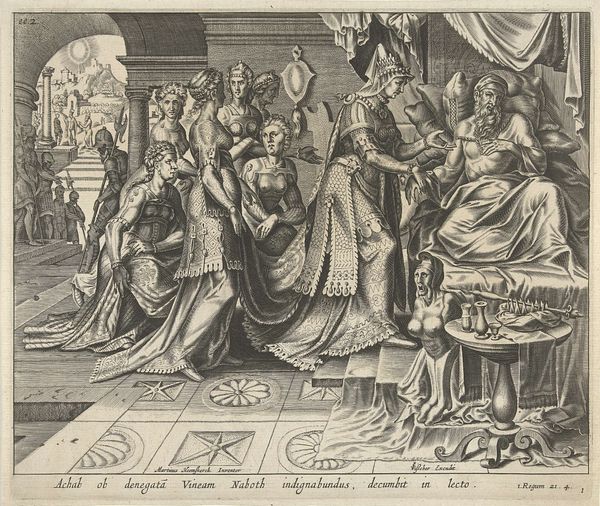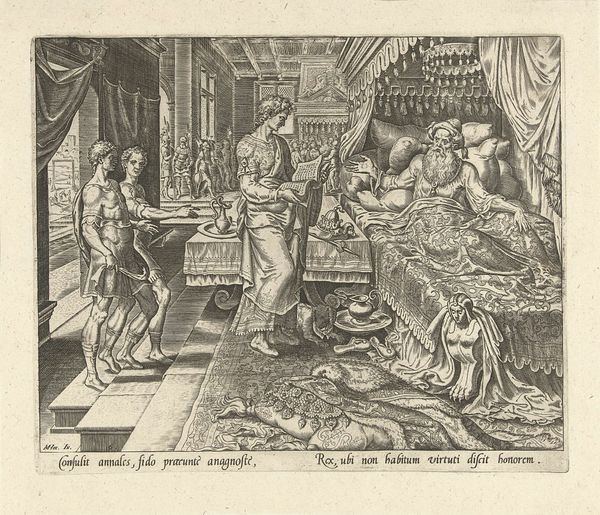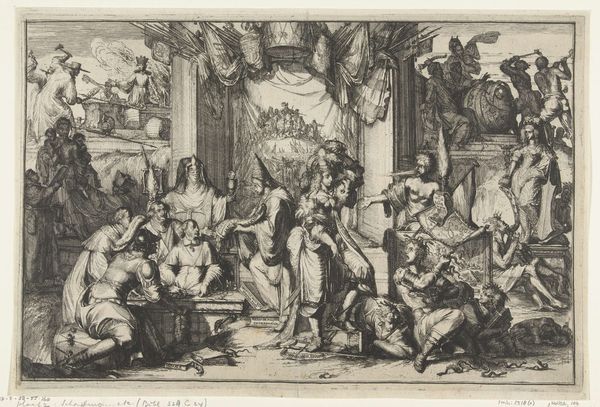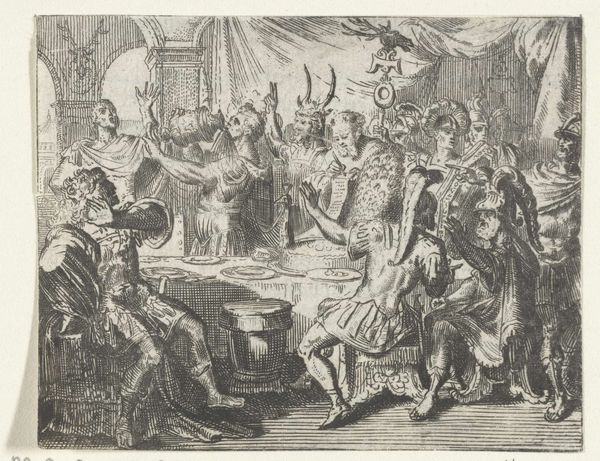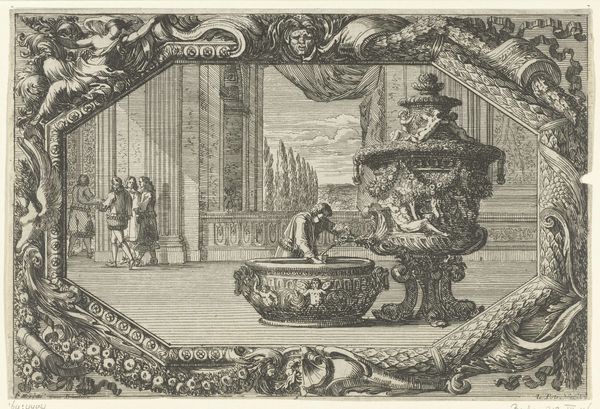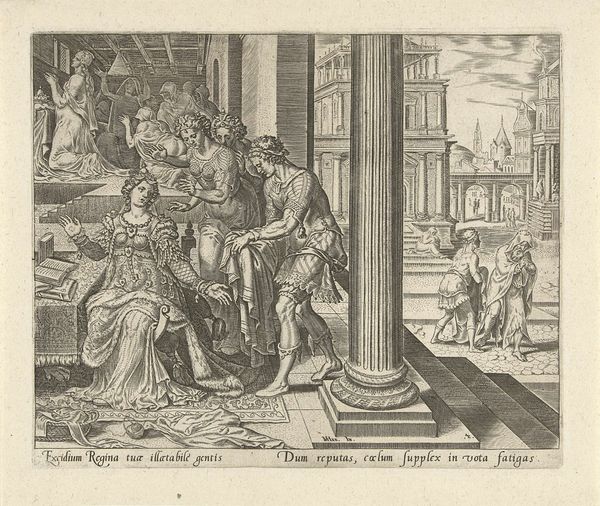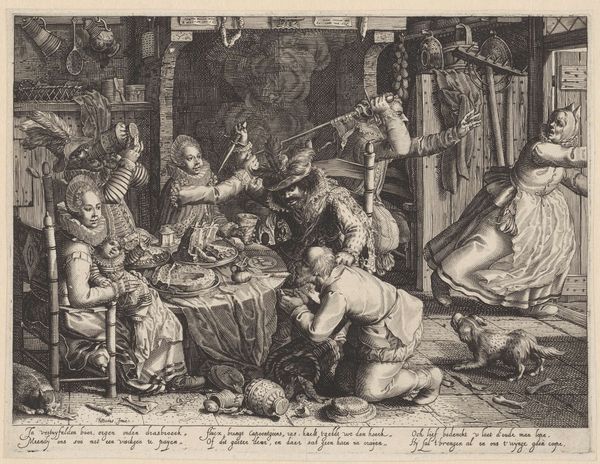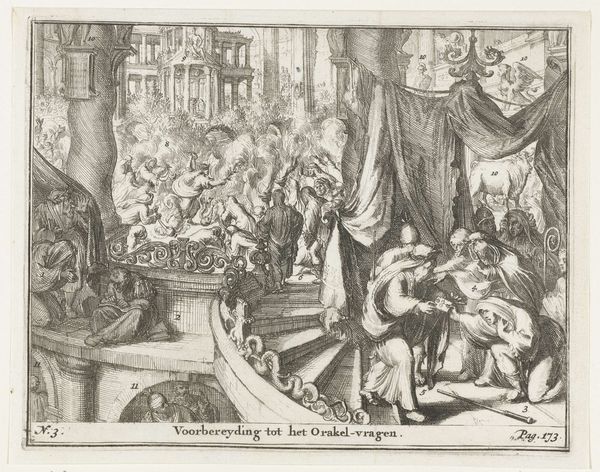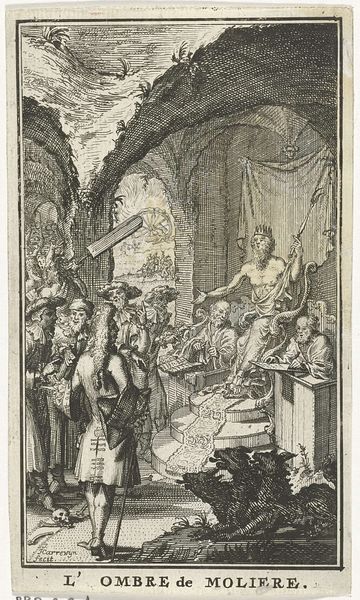
engraving
#
allegory
#
baroque
#
old engraving style
#
classical-realism
#
figuration
#
line
#
history-painting
#
engraving
Dimensions: height 203 mm, width 246 mm
Copyright: Rijks Museum: Open Domain
Philips Galle created this engraving, "The Crowning of Esther," sometime around the late 16th century. The composition is dominated by the sharp contrast between light and shadow achieved through dense, cross-hatched lines, creating a textured surface. The eye is immediately drawn to the figures of King Ahasuerus and Esther, rendered with intricate detail in their garments and expressions. Galle masterfully uses the technique of chiaroscuro to enhance the drama and depth of the scene. The lines and shading not only give form to the figures and objects, but also structure the emotional tone of the piece, emphasizing the power dynamics. This use of light and shadow extends beyond mere representation; it conveys a sense of the profound cultural and religious meanings embedded in the story of Esther. Look closely at how the composition is arranged. The figures, architecture and objects create an intricate visual system. Consider how this print functions as a complex semiotic structure where lines, shadows, and figures combine to create meaning, inviting you to interpret the symbolic weight of each element.
Comments
No comments
Be the first to comment and join the conversation on the ultimate creative platform.
